
No, that’s not a photo of me convalescing after my recent back injury — I seldom can be spotted sporting a turban. It’s a statue of Ste. Cecile, snapped from the middle of a mob of waist-high French schoolchildren at Albi. As a working writer, I harbor great fondness for Ste. Cecile: even after Roman jailors third attempt to chop her head off (thus the slashes on the statue’s neck), she kept right on talking. She has my vote for patron saint of queriers and submitters, therefore.
Speaking of submissions, I had a bright idea whilst I’ve been lolling about moaning in recent weeks. We had been just wrapping up a nice, meaty series on multiple-protagonist novels with discussion of how to write a synopsis for the tricky things. Just before my back decided to start playing tricks on me, I had promised you an in-depth look at how to write a standard-length synopsis for a super-complicated novel.
A most worthy endeavor, obviously, but equally obviously, one that is going to require some pretty hefty examples. Now, in my ordinary day-to-day life, tossing off a mock synopsis is quick work for me — as I mentioned earlier in the series, it’s a professional skill that becomes honed only with long practice. Trying to repeat the trick whilst on painkillers, however, is another matter altogether.
So rather than hold off on posting further until I have the oomph to pull off that high dive again, I’ve decided to put it on the proverbial back burner for the nonce and dedicate myself to a new series. Something a trifle more conducive to the kind of shorter posts one can write comfortably in bed, as well as one that’s been pressing on my mind lately.
I’m going to be spending the next few days, in short, presenting you with an actual reader’s actual first pages of text, helping you (and the reader kind enough to provide them) see how Millicent the agency screener is likely to respond to various aspects of them. I’ve been meaning to do this for a while now, but never has it seemed like a more valuable endeavor: while I’ve been bedridden, I’ve been re-reading John Steinbeck’s entire literary output, and I wish someone had sat him down for a stern talk about his opening pages. Your garden-variety Millicent of today would not make it past the first page of most of his books.
And it’s not because of the writing. Honestly, TEN PAGES on soil conditions in Salinas before the story starts in EAST OF EDEN, John?
Why use a real, live, feeling aspiring writer’s opening pages for this exercise, you ask, when I generally make up examples from scratch? Well, several reasons, not the least of which I touched upon above: coming up with examples in time-consuming, and in my current condition, much harder than usual. Also — and this is significant for an exercise like this — I’ve been a professional writer and editor for an awfully long time now, and my parents before me; the errors I might make, even for illustrative purposes, might not be the same as those new to the game’s.
Third, I’m hoping by having abruptly selected a reader from amongst those of you who have commented over the last few months, startling that sterling soul by requesting pages out of the blue, and lavishing this level of attention and blog space upon one writer’s efforts, not only to encourage more of you to comment from time to time, but also to enter the Author! Author!/WHISPER Great First Page Made Even Better Contest.
The deadline of which, incidentally, is a scant week away, in case anyone is wondering. I just mention, because the prize here is a very practical one, quite worth winning: Fab YA author Phoebe Kitanidis and I will critique the first pages of the lucky winners’ manuscripts in this very forum in June.
I know what you’re thinking, but this is not one of those annoyingly time-consuming literary contests that require entrants to twist their manuscripts into all sorts of gymnastic poses for submission. All the rules ask you to do here is something most of you have already been doing: present the actual first page of your manuscripts, in precisely the format you would send to an agent who requested pages.
Think of it as a pre-Millicent test drive.
Professional feedback comes in all shapes and sizes, ranging from pointing out ultra-basic presentation problems (“Um, is there a reason that you’re using 8-point Copperplate Gothic Bold when folks in publishing expect to see 12-point Times New Roman?”) to clarity issues (“Pardon my saying so, but is it really essential to the story not to describe the fellow standing behind your unsuspecting protagonist with an axe?”) to marketing considerations such as hooking the reader’s interest early (“TEN PAGES on soil conditions in Salinas before the story actually starts, John?”) Today, I am going to ease us into manuscript critique in its most simple form: the purely cosmetic.
That’s right, campers: it’s time for another round of Millicent’s Knee-Jerk Reaction Theatre. Ready, set — let’s look for superficial turn-offs!
Before anybody out there dismisses this level of critique as beneath the notice of a serious writer, allow me to point out that the since vast majority of submitted manuscripts get rejected on page 1, it’s poor strategy to ignore the superficialities, as all too many submitters do. Writers may prefer to think that their manuscripts should — and will — be judged purely on the quality of the writing, but since all professional manuscripts look the same way, it’s simply a hard fact of submission that an improperly-presented manuscript is generally dismissed faster than a properly-presented one, even if the writing is identical.
To put it less harshly, a savvy submitter recognizes that an agent or editor can only fall in love with the writing if s/he reads it — and reads it with an open mind. A misformatted manuscript, however, walks into the game with a strike against it.
That’s an important realization, because even aspiring writers familiar with the basics of standard format (and if you do not count yourself among them, I would strenuously urge you to consult the HOW TO FORMAT A MANUSCRIPT category on the archive list at right without delay) frequently submit manuscripts that would strike Millicent as, well, a tad unprofessional. The most common problems are subtle ones.
So subtle, in fact, that someone who did not read manuscripts for a living might not catch them at all. That’s the case even though we’re days away from even considering the kinds of red flags a writer would usually catch only by reading her submission IN ITS ENTIRETY, IN HARD COPY, and OUT LOUD.
How subtle are the formatting issues that might leap out at Millicent from page 1, shouting, “Strike one; no runners on base!” you ask? Well, see for yourself — in the example below, there are no fewer than ten of them, although some Millicents would spot only nine. Take a gander — and if you have trouble reading it at this size, try double-clicking on the image and opening it into its own window or saving it to your hard disk:
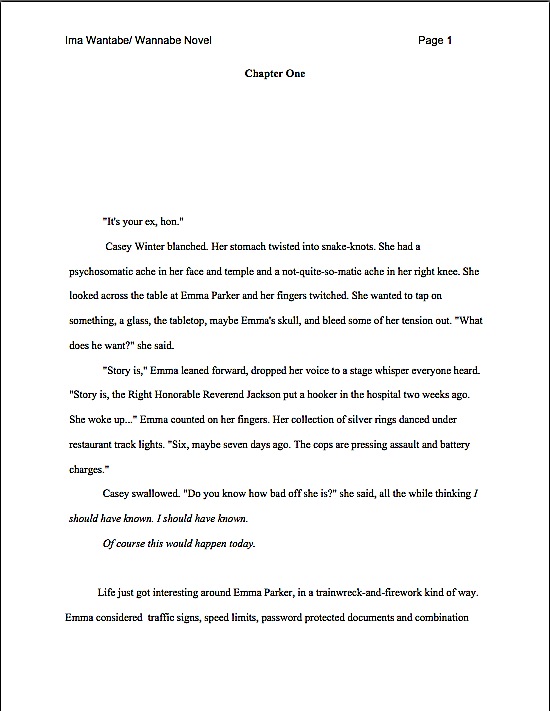
How many of them did you catch? To sharpen your eye a little, here is the same page with all of the purely formatting problems corrected. (For your comparing-and-contrasting pleasure, I’ve touched nothing else.)
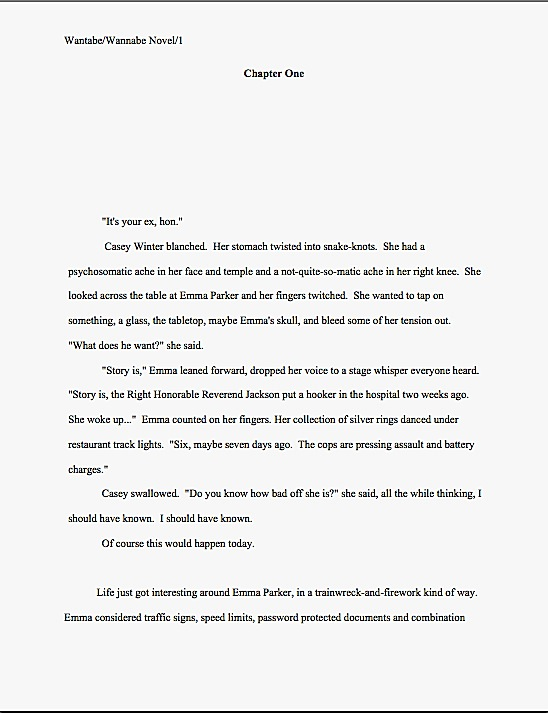
Seeing more of them now? If some of these differences jumped out at you, considering that Millicent stares at manuscript pages all day, every day, how many of them do you think she would spot within the first couple of seconds?
Just to make sure that we’re all on the same page with her, so to speak, let’s go over the purely cosmetic problems here. In the order they appear on the page:
1. The slug line is in different typeface than the text. (The slug line is in Arial, the body in Times New Roman.)
2. Incorrectly formatted slug line includes author’s first name, instead of just the last.
3. Incorrectly formatted slug line does not include the page number.
4. Incorrectly formatted slug line has a space between the forward slash and the title. The spacing in a slug line should be continuous: Name/Title/#
5. The page number is in wrong place on the page; it belongs in the slug line.
6. Pagination includes the word page. Although many aspiring writers think this looks nifty, a professionally-formatted manuscript would never include the word.
7. There’s an extra space before first word of paragraph 2. (Yes, most Millicents would catch that in either a hard or soft copy submission.)
8. There’s only a single space between each period and beginning of the next sentence. Admittedly, some agents would not consider this improper formatting; check each agency’s submission guidelines. If they do not mention preferring the single space, use two.
9. The narrative uses both the verb thinking and italics to indicate thought, a notorious screeners’ pet peeve.
10. In final line of the page, there are two spaces between considered and traffic. To a professional reader, this is a dead giveaway that the submitter did not proofread in hard copy.
Quite a lot of eyebrow-raisers for such an innocent-looking page of text, isn’t it? That’s how closely agency screeners read — and we haven’t even begun to talk about the writing itself, you will notice. Take heart, though: unless Millicent is having a spectacularly bad day, none of these problems by itself, or even all of them together, is likely to result in an on-the-spot cry of “Next!”
Why not? Well, believe it or not, the first version might be one of the more professional-looking first pages Millicent sees today. Most of the elements of standard format are in fact done correctly here, and it’s relatively free of misspellings and grammatical problems. (Although while we’re being nit-picky, there should be a comma after documents in the last line, and technically, it takes at least two sentences to make a proper narrative paragraph.)
So an optimistic aspiring writer often can — and does — get away with submitting a first page like the former. Most professional readers, including agents, contest judges, and Millicents, are willing to overlook a small cosmetic error or two, just as they tend to discount the occasional typo, provided that it is not repeated in the manuscript. (The first misspelling of a word might legitimately be a slip of a finger; the second indicates that the writer just doesn’t know how to spell the word in question, right?)
It doesn’t take too many tiny problems, however, to render a pro much less sympathetic than she might otherwise have been to a larger problem like an awkward sentence or the appearance of a cliché. And that’s on a good day — do you really want to take the chance that Millicent won’t just have burned her lip on a too-hot latte just before turning to your first page?
I see a forest of hands waving in my general direction. “But Anne,” some of you point out, and rightly, “I’m finding this rather depressing. Taken individually, the deviations from standard format we’re talking about are all quite small; I just don’t want to believe that good writing could ever fall prey to what, frankly, looks at first glance like a pretty respectable formatting job. I’m not discounting Millicent’s ability to reject the submission that happens to be in front of her when she scalds herself, but surely nobody concerned really wants aspiring writers to believe that their work could be rejected based on anything but the writing.”
It depends upon whom you ask, actually: I’ve met plenty of screeners — as well as agents, editors, and contest judges, come to think of it — who regard writers that, as they tend to put it, “haven’t taken the time to learn the business,” just aren’t as ready to be published as those who have. Part of working with an agent involves learning how to follow certain rules. It’s not as though any agent worth his salt would submit the first version above to an editor at a publishing house, after all; that would just be self-defeating.
Besides, these days, most good agents see so many cosmetically perfect submissions that they don’t lose too much sleep over rejecting those that are not. Or over Millicent’s having been more critical in the hour after she scalded her lip than on a normal day. They just figure that if a writer has real talent, s/he’ll go away, get better at presentation, and get picked up somewhere else.
That’s why, in case you’d been wondering, there’s no appeal for Millicent’s decisions: it’s not as though most agencies will run submissions past a second screener if the first did not like it, after all. Good writers are expected to be tenacious — and to take the time to learn how the publishing industry expects manuscripts to be presented.
So instead of regarding presentation as a secondary issue, try to think of paying attention to the cosmetic details as being polite to the person conducting the interview for a job you really, really want. Even if you have good reason to believe that some of the other interviewees are getting away with taking a few liberties, it honestly is in your best interest to be polite enough to show her your writing in the manner that Millicent is accustomed to seeing the best work in your chosen book category presented.
All that being said, did you spot the non-superficial reason this page might engender a knee-jerk rejection, even after just a superficial first glance? (Hint: it’s a marketing issue.)
Any guesses? No? Then let me ask you this deceptively simple question: based on this first page alone, in what book category does this manuscript belong?
It’s not readily apparent, is it? Depending upon the intended category, that could or could not be a problem. If this manuscript were, say, women’s fiction, this first page might not raise Millicent’s overactive eyebrows — but were it a mystery, the lack of species markings might well make her wonder when the mystery’s going to start. Ditto if this were Action/Adventure, Western, any stripe of romance…
Well, you get the picture. Millicent likes to be able to tell if a submission falls into a category that her boss represents — and she likes to be able to tell by the bottom of page 1.
Seem strange that she would want to make up her mind on the subject so quickly? Her reason is very practical, I assure you: since every book category has its own particular style — language choices, conventions, stock characters, etc. — and no agent represents every book category, it can save Millie’s boss a heck of a lot of time in the long run if she weeds out manuscripts that don’t fit comfortably into the category. While many writers legitimately find this professional desire to place their work in a box a trifle maddening, it must be admitted that it’s usually far, far easier for an agent to sell a book if he knows which shelf it might occupy at Barnes & Noble. If any.
Why not wait until, say, page 50 before making that determination? Do you have any idea how many submissions Millicent has to get through this week? It’s her job to narrow the field as quickly as possible. With that in mind, which Millicent do you think is most likely to reject the example above: one whose boss represents mainstream fiction, or one who represents primarily science fiction?
Or, to put it another way, would you or would you not be surprised to learn that the page above is the opening to a fantasy novel?
A word to the wise: if a reader who knows nothing about your book cannot tell by the bottom of page 1 what type of manuscript it is, it’s very much in your interest to revise with an eye toward making the category more obvious.
Don’t those of you who write exciting stories that begin in the everyday, mundane world, then leap into fast-paced action, wish you had heard that salient little piece of advice before you submitted for the first time? Yet I’m not sure how you would have known it — while it’s something that any agented writer could probably have told you, it’s one of those things that it’s just assumed every serious writer already knows.
Case in point: I flatter myself that I write about submission pretty exhaustively here at Author! Author! yet for the life of me, I can’t recall my ever having brought it up before. Strange, but true.
So please join me in a deep and heartfelt shout of gratitude to the reader who was kind enough to let me use this first page. Because frankly, had I not seen the title page, and thus known that this manuscript was intended to be fantasy before I read the first page, I doubt it would have occurred to me mention this extremely common rejection reason.
Already, my tricky strategy for the week is bearing fruit. Tune in next time to see if the trend continues. Keep up the good work!






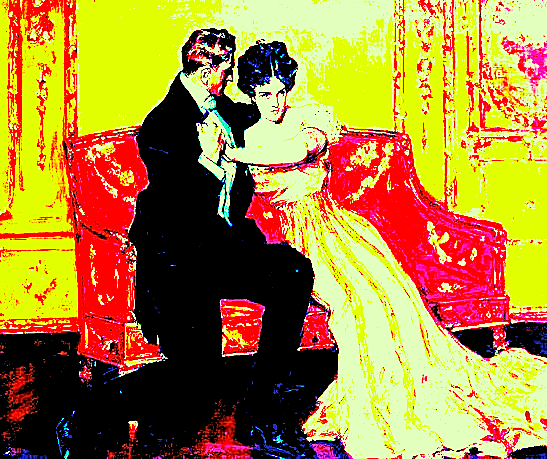
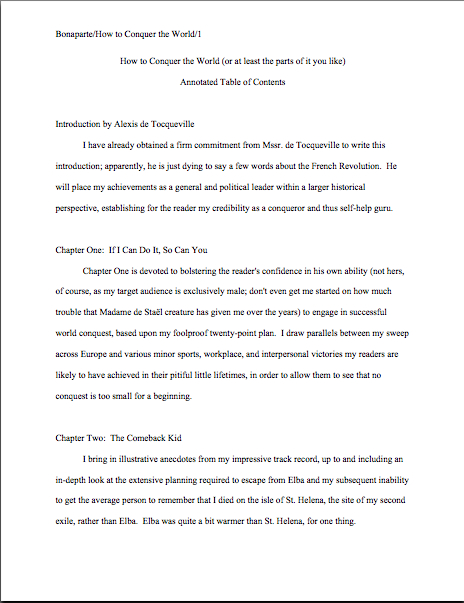
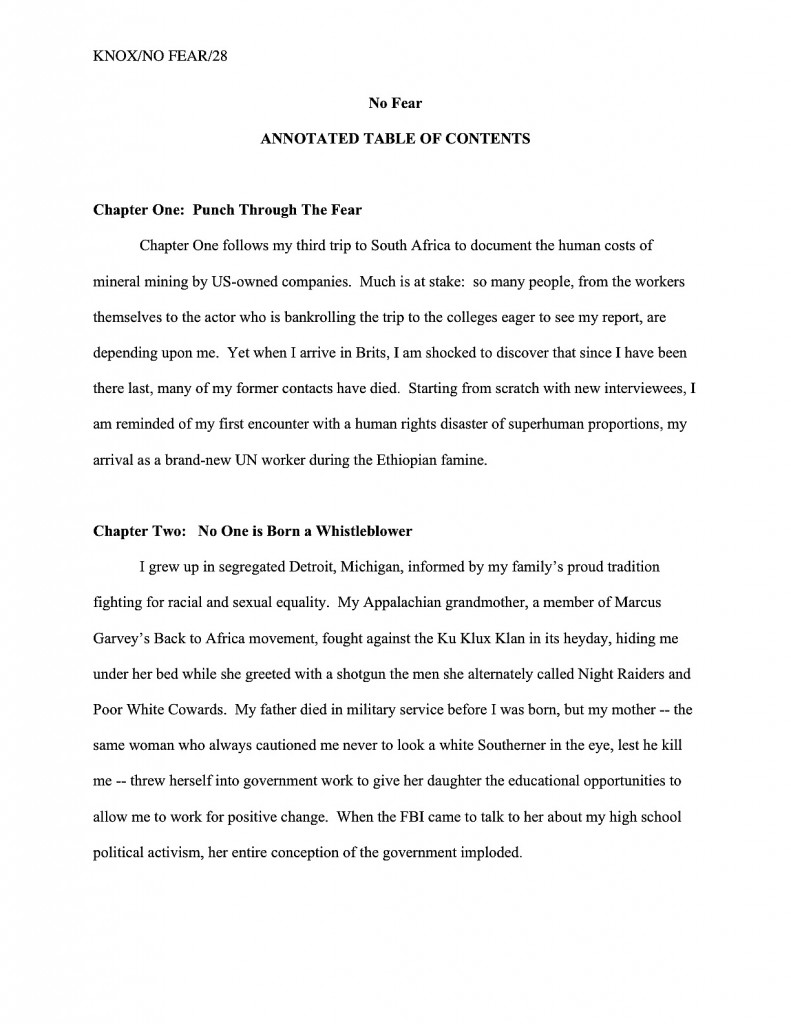

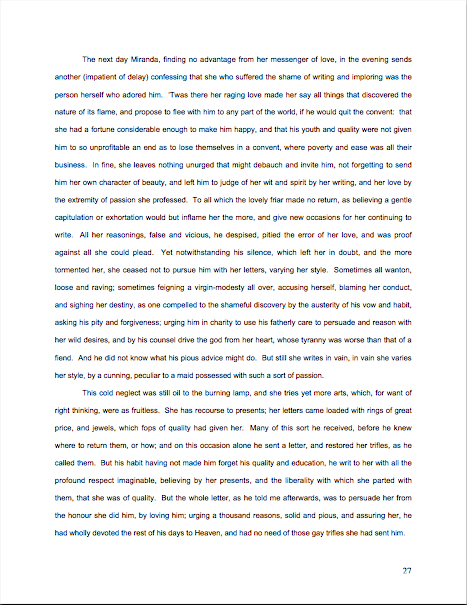

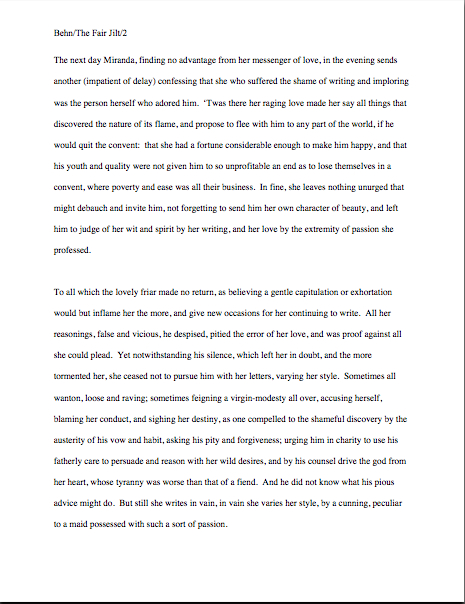

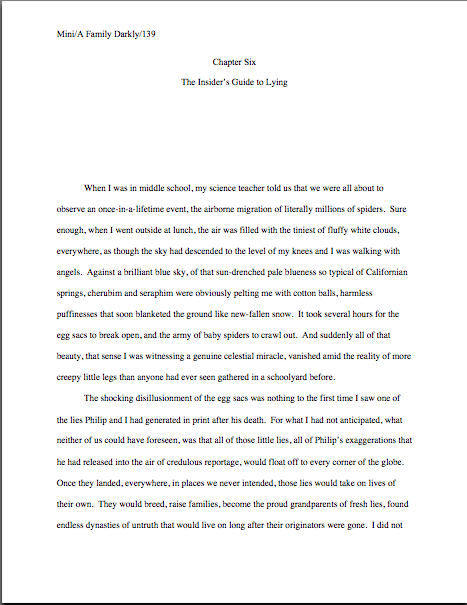
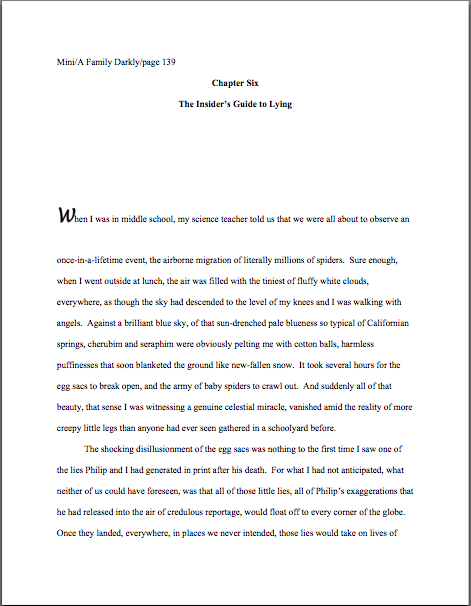

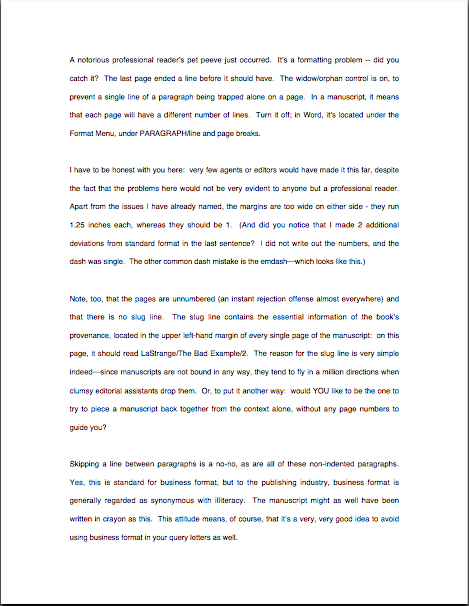
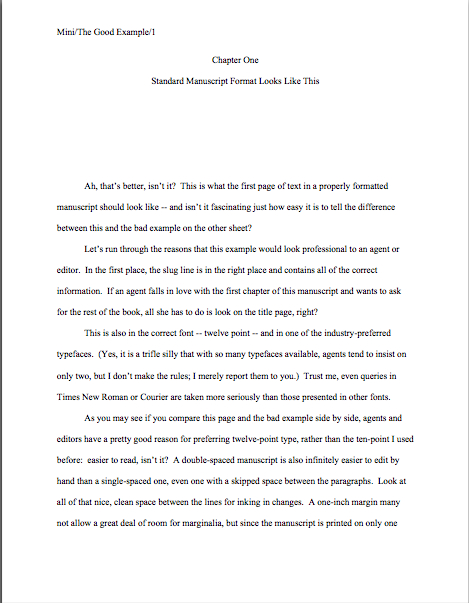
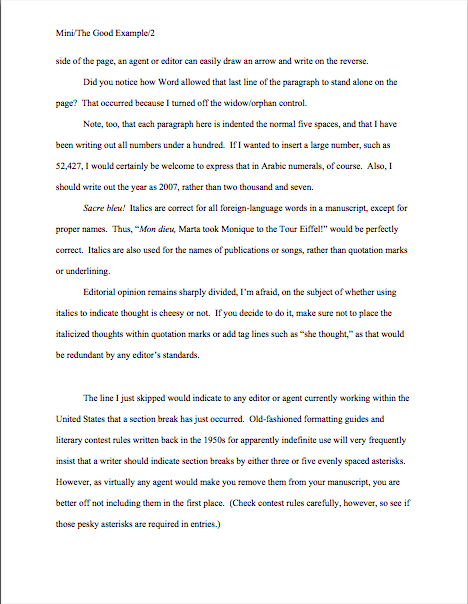

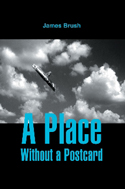
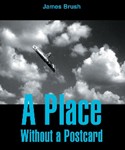 Paul Reynolds, a photographer who creates fake photos for tabloid magazines, wakes up with no idea where he is or how he got there. He can’t even recall his name. A strange man lurks nearby, breathing heavily and slowly flipping through a book. Paul hears the man’s breath, but he cannot see him. He realizes with mounting panic that his eyes no longer function.
Paul Reynolds, a photographer who creates fake photos for tabloid magazines, wakes up with no idea where he is or how he got there. He can’t even recall his name. A strange man lurks nearby, breathing heavily and slowly flipping through a book. Paul hears the man’s breath, but he cannot see him. He realizes with mounting panic that his eyes no longer function.




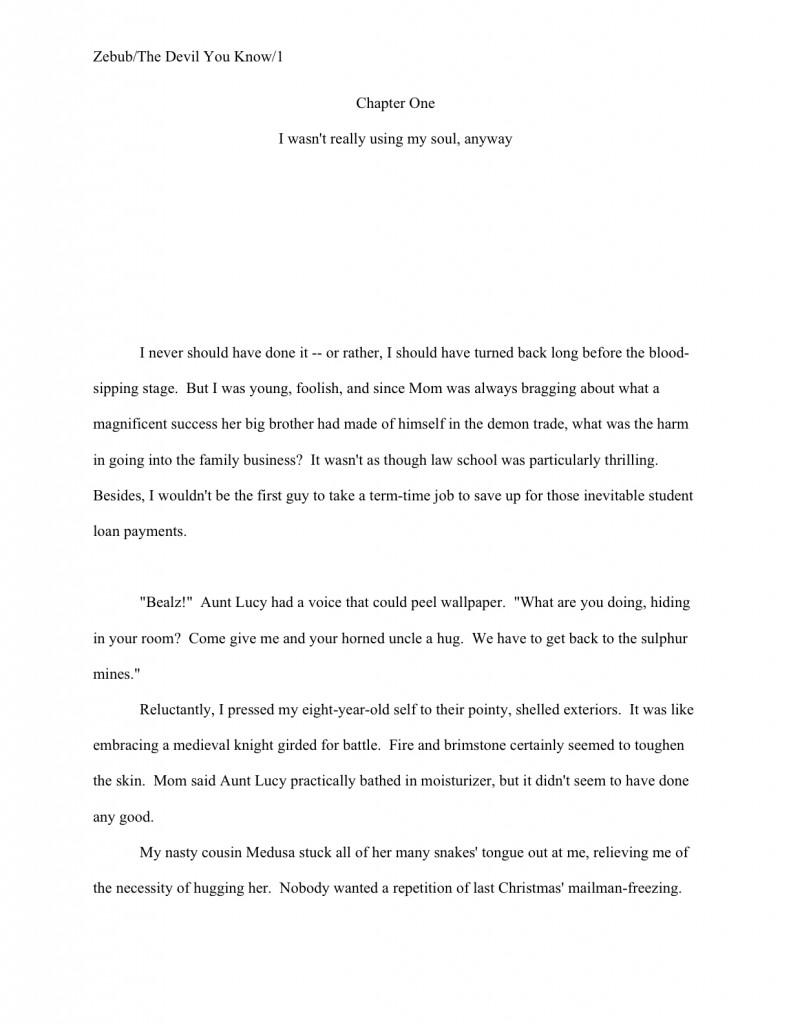





 unfortunately, writers all too often automatically assume that it’s the idea of the book being rejected, rather than a style-hampered querying letter or a limp synopsis.
unfortunately, writers all too often automatically assume that it’s the idea of the book being rejected, rather than a style-hampered querying letter or a limp synopsis.












